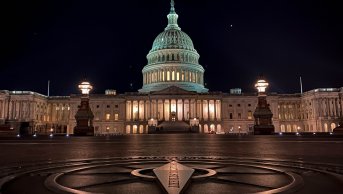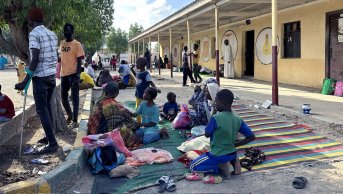The Story of Tarhuna: the Kani Brothers and Mass Graves

Not only the corpses of those associated with any political or military group but also a remarkable number of civilians, including women and children, are found in the mass graves discovered in Tarhuna since the Government of National Accord (GNA) forces took control over the city in June 2020. Some victims’ bodies are even marked with signs of torture parallel to the ‘’prisons’’ established by the Kani brothers, which could be turned into ‘’ovens’’ to torture the captured ones, as evidence shows. Additionally, not all are buried in those graves, but several corpses are found in a water well and a hospital morgue as well. The Kani brothers, known notoriously for their ‘’wild’’ reputation, and committing perhaps the most inhumane war crimes during the Libyan civil war emerged as a local family trying to dominate the city, a modest rural one at the south-eastern side of Tripoli embracing more than 60 tribes, informally. The Kani brothers, supported by various actors, built their ‘’rule’’ through and on terror. ‘’The Kaniyat’’, representing the Kani family and the group’s members, found shelter in Tarhuna and altered the city from one with a supportive function, concerning the security apparatus, during the Qadhafi era, to one within the strategic territory for the takeover of Tripoli by Haftar-backed forces. In order to perceive this transformation that led to hundreds of murdered, tortured, or abducted civilians drawing an extremely vivid portrait of war crimes and crimes against humanity, a depiction of the city’s past, its strategic significance, and most vitally the emergence of the Kaniyat should be examined.
Looking at the map, one can easily calculate the potential strategic role of Tarhuna, particularly in encircling the capital. Yet, the function of the city has evolved due to the alliances made by the Kaniyat with forces outside the city —later also indirect foreign interferences are observed. As is mentioned above, the city played a sympathetic role during the Qadhafi era particularly through its contribution to the process of producing military officers. Especially men in respectable families of the city were given jobs before the uprisings. Therefore, the majority in Tarhuna remained loyal to the memory of Qadhafi even after his fall in 2011. The Kani brothers, by offering themselves as the only force with the potential to dominate the city, took the support of revolutionary elites inside and outside Tarhuna until they escorted Haftar towards Tripoli. The Kani brothers did not resemble a disciplined and well-trained military offensive group but rather a messy crime gang. They owed much of their success to their primary vengeance-based, rather tribal, crimes in the chaotic environment of revolution and to their ability to control the local population through fear. During the initial years of their emergence the Kaniyat pledged allegiance to Fajr Libya, mainly shaped by Misratan forces, remaining faithful to an anti-Haftar rhetoric. However, parallel to the conditions reducing the GNA’s interest in the peripheral cities, which was stalling those with hollow promises like an international airport in Tarhuna, the group approached a tight corner. Though the Kani brothers financed themselves essentially through their tax on all kinds of smuggling for ‘’protection’’ and collected ‘’fines’’, like traffic fines, not enough financial support was found. The Kaniyat, in addition to its economic struggles, faced political isolation as well. It could not find any sponsor strong or willing enough to draw near southern Tripoli. Yet, towards the end of the second decade of the 21st century, Haftar claimed this role and promised economic as well as military support to the brothers. As a result, the Kaniyat allowed Haftar backed forces, including foreign support like Russian militias, to use Tarhuna as a rear area during the attempt to capture Tripoli and to bring the Kaniyat informally under the umbrella of the LNA with the name 9th Brigade. Not only Tarhuna but also Gharyan played a significant role in the attempt to overthrow the government in Tripoli in April 2019. However, Gharyan was lost to the GNA within months partly due to its actively opposing population. This made the resistance of Tarhuna even more vital and polished its value once more. The scene in Gharyan, with its inhabitants contributing to the city’s takeover by the GNA forces, evoked a more bitter threat in the Kani brothers, who applied severe policies to control the locals. That is, even a slight suspicion of disobedience accompanied by paranoid perceptions became enough to kill an entire family in horrible ways to evoke intense terror on the rest. Surveys with the relatives of the victims clarify that even many civilians without any political stance or those not fighting at all could easily be killed for either their possessions or merely to evoke fear. As the takeover did not take place in the planned manner, seeming to fail, Haftar ultimately lost foreign support. He had to retreat or leave the Kaniyat in its own mud. Though the role of the Kaniyat seemed to the Kani brothers to be precious and prestigious at the beginning of the operation, with regards to the parallel ambitions of Haftar for taking the capital and playing the charismatic military leader, they had to look for a way to stop at the end.
But what elements enabled such bloody ‘’leaders’’ to emerge on the soil of Tarhuna? The seven brothers, with especially three being remarkably active, built their fearsome and illegitimate rule in this modest city on two legs. First, the brothers’ tribal conflicts, with for instance the Na’aaja clan, enabled them to play the role of the fittest to survive and to control on the stage of a chaotic, post-revolution Libyan city. The already fragmented political as well as military and social structure of Libya, preparing a playground for informal militias or armed groups, only smoothened the floor for those wild Kani brothers. A concrete example of political fragmentation during the civil war might be depicted through the ‘’ministries’’ established by the brothers themselves. The second brother Mohammed el-Kani, playing the big authoritative brother, was followed by Abdul-Rahim el-Kani, responsible for domestic security, and Muhsin el-Kani, the ‘’Minister of Defence’’. Another incident that portrays the Kaniyat’s independent armed forces vividly is the parade of the brothers in 2017 accompanied by lions, being the brothers’ own property, and dozens of police. Secondly, the Kani brothers’ rise is partly due to their calculations which enabled them to change their camp swiftly when necessary, rather than clinging to a certain ideological stance. Though the Kaniyat made use of Salafist or anti-criminal discourses, which is indeed remarkably ironic considering their own crimes, for legitimacy if not for support, they had rather a flexible attitude when examined in the long run. The only tactic that never changed was their behaviour based on controlling through terror and force, preventing them from approaching any crumb of true legitimacy. Notably, when the Kaniyat suffered from political isolation and economic insufficiency after a set of alliances, it did not hesitate to shift to the camp of Haftar due to this soulless and hollow structure of the group, even though it, for instance, opposed Haftar’s Operation Karama in 2014.
With the takeover of Tarhuna by the Turkish-backed GNA forces in June 2020, the Kani brothers, of which some survived, and the members of the Kaniyat had to flee from Tarhuna together with their families. The Kanis are today mainly spread over eastern Libya, leaving a legacy of a remarkable amount of mass graves and numerous families as well as individuals with irreparable psychological and physical damage. The fragmented general structure of Libya, not only in terms of tribal upper identities but also smaller numerous particles is clearly observable in the story of Tarhuna. In this regard, Tarhuna’s tragedy may present a miniature chaotic environment, consisting of intense overlapping calculations of various groups, resembling Libya in the broader picture. The Kani brothers undoubtedly have planted fear in the earth of Tarhuna, there are still hundreds of people missing and the following generations will probably bear the reflections as a burden. Yet, there is hope in the hunger for peace and security, which can only be achieved by internal as well as international support.







